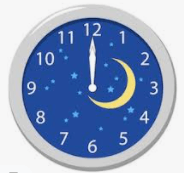
Stay Alert. Stay Safe. Stay Alive.
 Although there’s only one more week in Distracted Driving Awareness Month, it’s more important than ever to stay alert. Particularly because clocks change immediately after the month ends (November 1) – making driving even more dangerous.
Although there’s only one more week in Distracted Driving Awareness Month, it’s more important than ever to stay alert. Particularly because clocks change immediately after the month ends (November 1) – making driving even more dangerous.
AND … if that’s not enough reason to be careful … clocks change on Halloween eve! Although many neighborhoods are canceling trick-or-treating this year, there will still be more children on the streets than usual.
What does this all mean to you and your drivers?
Keep in mind that the time shift means people who work the 9 a.m. to 5 p.m. day shift won’t be waking up in the dark anymore, but it does means they’ll be driving home in the dark:
- When daylight savings time ends, we lose an hour of afternoon sunlight. This may increase the likelihood of car accidents since more time is spent on the road in the darkness.
- Studies have shown that more people are active during the evening. Without the added sunlight provided by daylight savings time, driver visibility is reduced, increasing the odds of a crash.
- Some experts state that the abrupt time change that accompanies the start and end of daylight savings time, leaves little time for people to adapt. As a result, drivers may still behave as if it’s light outside even when it’s dark. They may drive faster, and, at the same time, pedestrians may be less attentive.
How can you adjust your driving habits to compensate for the shorter daylight period?
Get Enough Rest
The time change throws off your body’s internal clock and can impact the quality of your sleep. Limit your exposure to light after bedtime and maximize exposure during the day to ensure a swift change of your internal clock. Never drive while overtired. The shift from drowsy to asleep at the wheel can happen more quickly than people think.
Drive Defensively
You may be feeling alert – but not everyone is. Be aware of people who drift between lanes or stop abruptly. Leave plenty of room between you and the car in front of you. Follow at a safe distance so you’re prepared to react under any situation. Remember, decreased visibility during darker afternoon commutes can affect your depth perception and peripheral vision, increasing the chances for a car accident.Watch for Pedestrians and Cyclists
Approach all crosswalks and intersections slowly and check your mirrors for oncoming cyclists or pedestrians before making any turns. When visibility is reduced, people and objects on the road are harder to see. Adjust your speed to compensate for the low light conditions.
Finally, make sure you get enough sleep the night of the time change and for the first week after it. Yes, that means going to bed early on Saturday, October 31. As an added benefit, by going to bed early you will avoid the so-called “vampire hours” of driving between midnight and 2 a.m. when you are statistically much more at risk of being hit and killed in a drunk driving accident. Continue your vigilance all week after the time change: Be extra aware that other drivers may be fatigued, and drive defensively to prevent a motor vehicle accident.
- Posted by Melissa.Senoff@smartdrive.net
- On 25 October 2020
